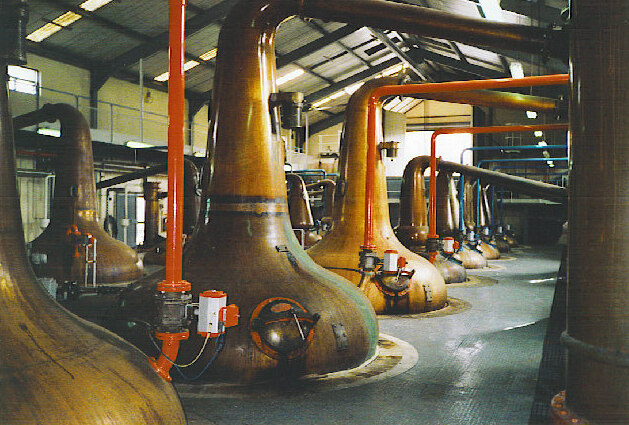|
Lambanog
Lambanóg is a traditional Filipino distilled coconut palm liquor. It is derived from tubâ made from coconut sap that has been aged for at least 48 hours. It originates from Luzon and the Visayas Islands (where it is known as ''dalisay de coco''). During the Spanish colonial period, it was also known as ''vino de coco'' in Spanish. It is also commonly described as "coconut vodka" due to its clear to milky white color and high alcohol content. It is particularly potent, having a typical alcohol content of 80 to 90 proof (40 to 45% abv) after a single distillation; this may go as high as 166 proof (83% abv) after the second distillation. Its smoothness has been compared to that of Japanese sake and European schnapps. A similar distilled drink made from nipa palm sap is known as ''laksoy''. History Tubâ, a kind of palm wine, existed in the Philippines before colonisation. They were widely consumed for recreation and played an important role in various religious rituals. He ... [...More Info...] [...Related Items...] OR: [Wikipedia] [Google] [Baidu] |
Laksoy
Laksoy (also spelled lacsoy), is a traditional Filipino distilled nipa palm liquor. It is derived from tubâ (palm toddy) made from nipa palm sap that has been aged for at least 48 hours. It originates from Eastern Mindanao, the Visayas Islands (where it is known as dalisay or dalisay de nipa), and the Bicol Region (where it is known as barik). During the Spanish colonial period, it was also known as ''vino de nipa'' in Spanish. Like the lambanog (made from coconut sap), it is particularly potent, having a typical alcohol content of 70 to 100 proof (40 to 45% abv) after a single distillation. History Tubâ, a kind of palm wine, existed in the Philippines before colonisation. They were widely consumed for recreation and played an important role in various religious rituals. Heavy consumption of alcohol in the Philippine islands was described in several Spanish accounts. Social drinking (''tagayan'' or ''inuman'' in Tagalog and Visayan languages) was and continues to be a ... [...More Info...] [...Related Items...] OR: [Wikipedia] [Google] [Baidu] |
Coconut
The coconut tree (''Cocos nucifera'') is a member of the palm tree family (Arecaceae) and the only living species of the genus ''Cocos''. The term "coconut" (or the archaic "cocoanut") can refer to the whole coconut palm, the seed, or the fruit, which botanically is a drupe, not a nut. The name comes from the old Portuguese word '' coco'', meaning "head" or "skull", after the three indentations on the coconut shell that resemble facial features. They are ubiquitous in coastal tropical regions and are a cultural icon of the tropics. The coconut tree provides food, fuel, cosmetics, folk medicine and building materials, among many other uses. The inner flesh of the mature seed, as well as the coconut milk extracted from it, form a regular part of the diets of many people in the tropics and subtropics. Coconuts are distinct from other fruits because their endosperm contains a large quantity of clear liquid, called '' coconut water'' or ''coconut juice''. Mature, ripe co ... [...More Info...] [...Related Items...] OR: [Wikipedia] [Google] [Baidu] |
Palm Wine
Palm wine, known by several local names, is an alcoholic beverage created from the sap of various species of palm tree such as the palmyra, date palms, and coconut palms. It is known by various names in different regions and is common in various parts of Africa, the Caribbean, South America, South Asia, Southeast Asia and Micronesia. Palm wine production by smallholders and individual farmers may promote conservation as palm trees become a source of regular household income that may economically be worth more than the value of timber sold. Tapping The sap is extracted and collected by a tapper. Typically the sap is collected from the cut flower of the palm tree. A container is fastened to the flower stump to collect the sap. The white liquid that initially collects tends to be very sweet and non- alcoholic before it is fermented. An alternative method is the felling of the entire tree. Where this is practised, a fire is sometimes lit at the cut end to facilitate th ... [...More Info...] [...Related Items...] OR: [Wikipedia] [Google] [Baidu] |
Tubâ
Tubâ () is a Filipino alcoholic beverage created from the sap of various species of palm trees. During the Spanish colonial period, tubâ was introduced to Guam, the Marianas, and Mexico via the Manila Galleons. They remain popular in Mexico, especially in the states of Colima, Jalisco, Michoacán, Nayarit, and Guerrero. Tubâ was also introduced to the Torres Strait Islands of Australia in the mid-19th century by Filipino immigrant workers in the pearling industry. History Tubâ has existed in the Philippines since pre-colonial times. They were widely consumed for recreation as well as play an important role in the animist religious rituals presided by '' babaylan'' shamans. Heavy consumption of tubâ and other alcoholic beverages in the Philippines were reported by early Spanish colonizers. Social drinking (''inuman'' or ''tagayan'' in Tagalog and Visayan languages) was and continues to be an important aspect of Filipino social interactions. A peculiar and universal ... [...More Info...] [...Related Items...] OR: [Wikipedia] [Google] [Baidu] |
Still
A still is an apparatus used to distill liquid mixtures by heating to selectively boil and then cooling to condense the vapor. A still uses the same concepts as a basic distillation apparatus, but on a much larger scale. Stills have been used to produce perfume and medicine, water for injection (WFI) for pharmaceutical use, generally to separate and purify different chemicals, and to produce distilled beverages containing ethanol. Application Since ethanol boils at a much lower temperature than water, simple distillation can separate ethanol from water by applying heat to the mixture. Historically, a copper vessel was used for this purpose, since copper removes undesirable sulfur-based compounds from the alcohol. However, many modern stills are made of stainless steel pipes with copper linings to prevent erosion of the entire vessel and lower copper levels in the waste product (which in large distilleries is processed to become animal feed). Copper is the prefer ... [...More Info...] [...Related Items...] OR: [Wikipedia] [Google] [Baidu] |
Drinking Culture
Drinking culture is the set of traditions and social behaviors that surround the consumption of alcoholic beverages as a recreational drug and social lubricant. Although alcoholic beverages and social attitudes toward drinking vary around the world, nearly every civilization has independently discovered the processes of brewing beer, fermenting wine and distilling spirits. Alcohol and its effects have been present in societies throughout history. Drinking is documented in the Hebrew and Christian Bibles, in the Qur'an, in art history, in Greek and Roman literature as old as Homer and in Confucius's '' Analects''. Social drinking "Social drinking", also commonly referred to as "responsible drinking", refers to casual drinking of alcoholic beverages in a social setting without an intent to become intoxicated. In Western cultures, good news is often celebrated by a group of people having a few alcoholic drinks. For example, alcoholic drinks may be served to "wet the baby's h ... [...More Info...] [...Related Items...] OR: [Wikipedia] [Google] [Baidu] |
Tagalog Language
Tagalog (, ; ; ''Baybayin'': ) is an Austronesian languages, Austronesian language spoken as a first language by the ethnic Tagalog people, who make up a quarter of the population of the Philippines, and as a second language by the majority. Its Standard language, standardized form, official language, officially named Filipino language, ''Filipino'', is the national language of the Philippines, and is one of two official languages, alongside Philippine English, English. Tagalog is closely related to other Philippine languages, such as the Bikol languages, Ilocano language, Ilocano, the Bisayan languages, Kapampangan language, Kapampangan, and Pangasinan language, Pangasinan, and more distantly to other Austronesian languages, such as the Formosan languages of Taiwan, Indonesian language, Indonesian, Malay language, Malay, Hawaiian language, Hawaiian, Māori language, Māori, and Malagasy language, Malagasy. Classification Tagalog is a Central Philippine languages, Central Phi ... [...More Info...] [...Related Items...] OR: [Wikipedia] [Google] [Baidu] |
Visayan Languages
The Bisayan languages or Visayan languages are a subgroup of the Austronesian languages spoken in the Philippines. They are most closely related to Tagalog and the Bikol languages, all of which are part of the Central Philippine languages. Most Bisayan languages are spoken in the whole Visayas section of the country, but they are also spoken in the southern part of the Bicol Region (particularly in Masbate and Sorsogon where several dialects of Waray are spoken), islands south of Luzon, such as those that make up Romblon, most of the areas of Mindanao and the province of Sulu located southwest of Mindanao. Some residents of Metro Manila also speak one of the Bisayan languages. Over 30 languages constitute the Bisayan language family. The Bisayan language with the most speakers is Cebuano, spoken by 20 million people as a native language in Central Visayas, parts of Eastern Visayas, and most of Mindanao. Two other well-known and widespread Bisayan languages are Hiligaynon ... [...More Info...] [...Related Items...] OR: [Wikipedia] [Google] [Baidu] |
Philippines
The Philippines (; fil, Pilipinas, links=no), officially the Republic of the Philippines ( fil, Republika ng Pilipinas, links=no), * bik, Republika kan Filipinas * ceb, Republika sa Pilipinas * cbk, República de Filipinas * hil, Republika sang Filipinas * ibg, Republika nat Filipinas * ilo, Republika ti Filipinas * ivv, Republika nu Filipinas * pam, Republika ning Filipinas * krj, Republika kang Pilipinas * mdh, Republika nu Pilipinas * mrw, Republika a Pilipinas * pag, Republika na Filipinas * xsb, Republika nin Pilipinas * sgd, Republika nan Pilipinas * tgl, Republika ng Pilipinas * tsg, Republika sin Pilipinas * war, Republika han Pilipinas * yka, Republika si Pilipinas In the recognized optional languages of the Philippines: * es, República de las Filipinas * ar, جمهورية الفلبين, Jumhūriyyat al-Filibbīn is an archipelagic state, archipelagic country in Southeast Asia. It is situated in the western Pacific Ocean and consists of aro ... [...More Info...] [...Related Items...] OR: [Wikipedia] [Google] [Baidu] |
Rattan
Rattan, also spelled ratan, is the name for roughly 600 species of Old World climbing palms belonging to subfamily Calamoideae. The greatest diversity of rattan palm species and genera are in the closed- canopy old-growth tropical forests of Southeast Asia, though they can also be found in other parts of tropical Asia and Africa. Most rattan palms are ecologically considered lianas due to their climbing habits, unlike other palm species. A few species also have tree-like or shrub-like habits. Around 20% of rattan palm species are economically important and are traditionally used in Southeast Asia in producing wickerwork furniture, baskets, canes, woven mats, cordage, and other handicrafts. Rattan canes are one of the world's most valuable non-timber forest products. Some species of rattan also have edible scaly fruit and heart of palm. Despite increasing attempts in the last 30 years at commercial cultivation, almost all rattan products still come from wild-harvested ... [...More Info...] [...Related Items...] OR: [Wikipedia] [Google] [Baidu] |
.png)






_with_fruits_(7844049166).jpg)